A clogged kitchen sink can be a frustrating and inconvenient problem to deal with. Whether it’s a buildup of food particles, grease, or foreign objects, a clog can disrupt your daily routine and hinder your ability to carry out essential kitchen tasks. In this comprehensive guide, we will explore effective methods and techniques to unclog your kitchen sink and restore the smooth flow of water. From simple home remedies to specialized tools, we will equip you with the knowledge and insights to tackle any stubborn clog like a pro.
Understanding the Common Culprits
Before diving into the unclogging methods, it’s important to understand the common culprits behind kitchen sink clogs. By recognizing these factors, you can take preventive measures to minimize the occurrence of clogs in the future. Here are some of the typical causes:
- Food particles: Small bits of food can accumulate in the drain and trap other debris, leading to clogs over time.
- Grease and oils: Cooking oils and greasy substances can solidify inside the pipes, narrowing the passageways and causing blockages.
- Coffee grounds and tea leaves: These fine particles can clump together and create dense clogs.
- Soap residue: Soap scum can build up and obstruct the drain pipes, particularly when combined with other debris.
Prevention is Key
The best way to deal with kitchen sink clogs is to prevent them from happening in the first place. By adopting a few simple habits, you can minimize the risk of clogs and ensure the longevity of your plumbing system. Consider the following preventive measures:
- Dispose of food waste properly: Use a strainer or drain cover to catch food particles and dispose of them in the trash instead of rinsing them down the sink.
- Avoid pouring grease down the drain: Allow grease to solidify in a container and dispose of it in the trash.
- Dispose of coffee grounds and tea leaves properly: Place them in a compost bin or discard them in the trash.
- Regular maintenance: Periodically flush your kitchen sink with hot water or a mixture of baking soda and vinegar to prevent the buildup of residue.
Method 1: Hot Water and Dish Soap
For minor clogs caused by grease or soap residue, a simple combination of hot water and dish soap can often do the trick. Here’s how to proceed:
- Boil a kettle or pot of water.
- Squirt a generous amount of dish soap down the drain.
- Pour the hot water slowly into the drain, allowing it to work its way through the clog.
- Repeat the process if necessary.
The hot water helps to break down grease and soap residue, while the dish soap acts as a lubricant to facilitate the removal of debris.
Method 2: Baking Soda and Vinegar
Baking soda and vinegar are common household ingredients that, when combined, create a powerful reaction that can help dislodge clogs. Follow these steps:
- Pour a pot of boiling water down the drain to loosen any debris.
- Sprinkle about half a cup of baking soda into the drain.
- Pour a mixture of one cup of vinegar and one cup of hot water down the drain.
- Immediately cover the drain with a plug or cloth to trap the fizzing action inside the pipes.
- Allow the mixture to work for about 10-15 minutes.
- Flush the drain with hot water to clear any remaining debris.
The combination of baking soda and vinegar creates a bubbling reaction that can help break down clogs and remove buildup.
Method 3: Plunger
A plunger is a versatile tool that can be highly effective in dislodging stubborn clogs. Follow these steps to use a plunger on your kitchen sink:
- Partially fill the sink with enough water to cover the plunger’s cup.
- Place the plunger over the drain, ensuring a tight seal.
- Push down and pull up vigorously to create suction and dislodge the clog.
- Repeat the plunging motion several times until the water starts to drain freely.
The plunging action creates pressure changes that can help dislodge and move the clog along.
Method 4: Plumbing Snake or Auger
If the above methods fail to unclog your kitchen sink, a plumbing snake or auger can be a handy tool to have on hand. Here’s how to use it:
- Insert the snake into the drain, rotating it gently as you push it farther into the pipe.
- Continue feeding the snake until you encounter resistance.
- Rotate the snake and apply gentle pressure to break through the clog.
- Slowly retract the snake while continuing to rotate it.
- Flush the drain with hot water to remove any remaining debris.
A plumbing snake or auger can reach deep into the pipes and physically break apart stubborn clogs, allowing water to flow freely again.
Method 5: Enzyme-based Drain Cleaner
Enzyme-based drain cleaners are a chemical-free alternative that uses natural enzymes to break down organic matter. Follow the instructions provided by the product, as different brands may have varying application methods. Generally, you will pour the recommended amount of the cleaner into the drain and allow it to sit for a specified period. Enzyme-based cleaners work slowly and may require overnight application for optimal results.
When to Seek Professional Help
While the methods mentioned above can effectively resolve most kitchen sink clogs, there may be instances where professional assistance is necessary. Consider seeking professional help if:
- The clog persists despite multiple attempts using different unclogging methods.
- You are uncomfortable or unfamiliar with using tools such as plumbing snakes or augers.
- There are signs of a more severe plumbing issue, such as foul odors, water backup in other drains, or slow drainage throughout the house.
A professional plumber has the expertise and specialized tools to diagnose and address complex plumbing issues effectively.
Conclusion
Dealing with a clogged kitchen sink can be a frustrating experience, but armed with the right knowledge and techniques, you can tackle the problem with confidence. Remember to take preventive measures to minimize the risk of future clogs and be mindful of what goes down your drain. Whether you opt for simple home remedies like hot water and dish soap, or utilize specialized tools like plungers or plumbing snakes, the methods outlined in this guide will help you restore the free-flowing functionality of your kitchen sink. However, if you encounter persistent or severe clogs, it is always wise to seek professional help to avoid further damage to your plumbing system. With these strategies at your disposal, you can bid farewell to kitchen sink clogs and enjoy a smoothly functioning kitchen once again.


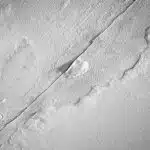



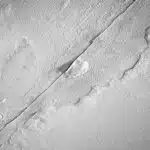
![How To Get Hair Out Of A Bathtub Drain 7 2/365 [Bathtub Drain]](https://green-life.blog/wp-content/uploads/2023/05/cOEu5edpkejq-150x150.jpg.webp)

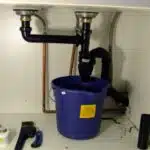





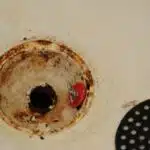

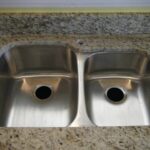

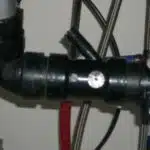
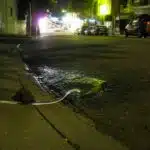



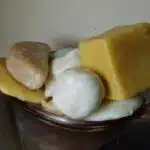




![How To Replace A Bathtub Drain In A Mobile Home 29 2/365 [Bathtub Drain]](https://green-life.blog/wp-content/uploads/2023/05/3ft8KAJsNnjq-150x150.jpg.webp)